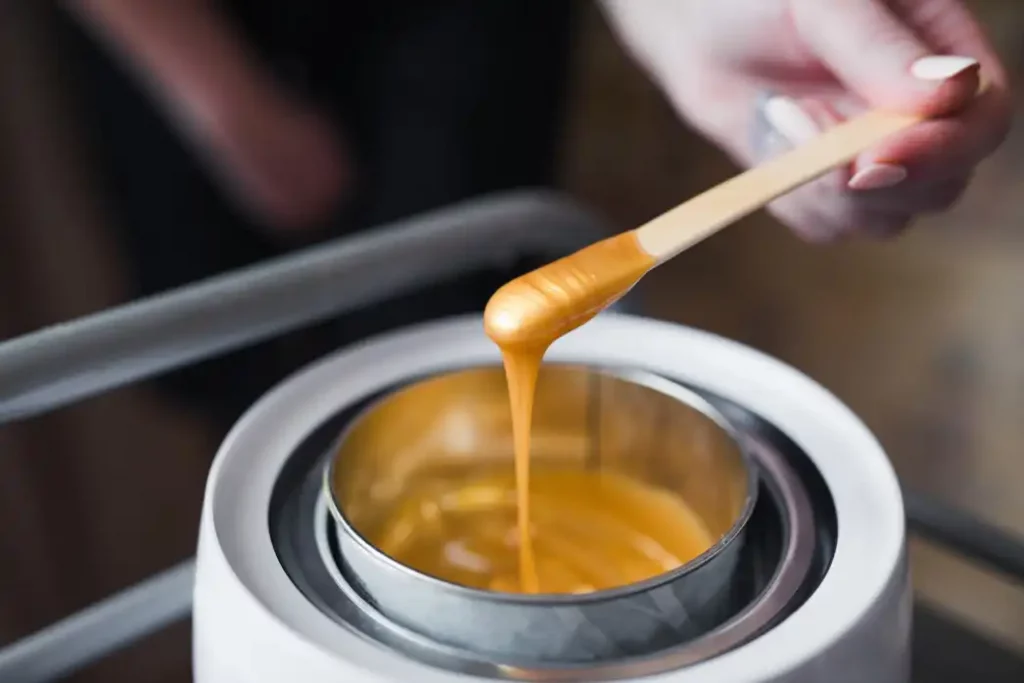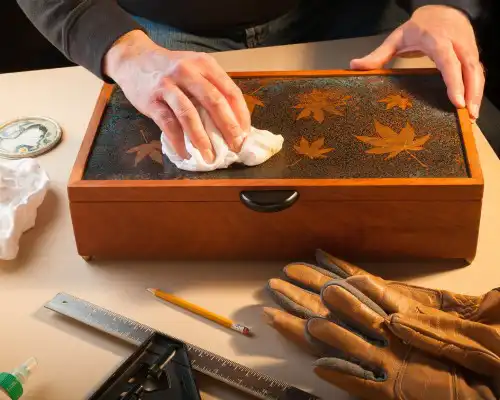When you’re working on a piece of furniture with a beautiful finish, you don’t want to take any chances. You want to protect it, but you don’t want to cover it up. So what do you do? You finish wax. But what exactly is finishing wax? Is it the same as paste wax?
Overview of Paste Wax
Paste waxes are a realistic option that you can use to protect furniture. This product is often designed from Carnauba wax extract. It is a wax that is popularly used to manufacture cosmetics and natural skin care products as well. The palm trees which produce Carnauba are native to Brazil. The wax has natural protective features as it forms on the tree’s leaves and protects them from heat and moisture.

Process
You need to ensure that all surfaces are clean. Wipe off any dust, dirt, and grease. Make sure you use a clean cloth. You will only need to apply a thin but even coat of paste wax to the wooden surface. The wax needs 10-15 minutes to dry thoroughly—Polish with a clean cloth, weighted buffer, or electric polisher. Paste wax is known to form a thick, creamy wax. It should offer you marginal protection from elements like water and heat. You can apply this wax with cheesecloth or rag.
Benefits
- Provides a very high level of shine.
- It can be easily applied to synthetic materials.
- Natural and non-toxic
Downsides
- Shallow melting point
- Offers little defence against water
- Will not last long-term
Overview of Finishing Wax
Process
You can apply this product with a microfiber cloth. It should take you about 10-15 to dry. It is best to wait until the wax is fully dry before buffing. To clean the work area, you will need mineral spirits or paint thinner. Your furniture will need about one coat if it’s been previously coated. If the wood is raw, then it will need two coats. The product works best on furniture, antiques, woodwork, cabinets, doors, paneling, and accessories. It comes in a natural and dark color.

Benefits
- Fewer coats are needed because the wax is thick.
- Dries quickly.
- Natural colour.
Downsides
- Cannot seal the wood
- It can be applied on top of polyurethane
- Not scratch resistant.
How to buff paste wax
To buff paste wax, it is essential to be sure that the resin is fully prepared. You can determine this by whether it is no longer tacky to touch. A generally followed rule is to wait until 10-15 minutes have passed. After this, you can use a clean cloth and buff the surface. Since the goal is to produce a satin sheen shine, you must buff lightly. For extra shine, you will need to grind harder.
It is best to avoid rushing to buff the wax too soon. Be careful to ensure the solvent has fully evaporated. If the wax has not dried, you will remove the wax you applied. You can tell wax is not dry when it appears to have uneven, dull, and shiny areas.
How to apply finishing wax
The key to applying finishing wax is to ensure you have several cleverly applied layers of wax. These thin layers should combine well to form a smooth surface. A glossy shine should also accompany a smooth surface if you obtain a smooth surface. The more time you spend polishing, the better the smooth shine. If you have shined a pair of shoes before, the process will be similar.
It would be ideal to use a soft clean cloth or waxing brush to apply the finishing wax. Lightly dip the material into the wax can. Make sure to rub off any excess before you use it. On initial application, you will need to rub the wax vigorously. Make sure to spread it evenly on the surface until it becomes thin. After this exercise, some patience until the solvents in the furniture wax thoroughly dried. Depending on what kind of solvent is in the resin and the current temperature, you should wait about 10-15 minutes.
Is paste wax the same as finishing wax?
You can use both waxes interchangeably.
What is paste wax used for?
Paste wax is a traditional product that can provide woodworkers with high-quality shine. It does have a wide range of shortfalls, but using the paste wax will help renew a surface. You can add it over an existing finish, and this works to provide an unmatched shine and gloss. Many woodworkers use this to cover up any slight blemishes and minor imperfections. If you have any furniture with tiny scratches or cracks, then you can safely deal with these by helping light reflect against the surface evenly. In this way, the product limits any visible imperfections on the surface, and all that remains to be seen is a beautiful luster.
The main challenge with this product is that it cannot provide the same level of protective finish that is often found in synthetic products. This problem makes it less attractive in the modern market. It is considered to be a lower quality sealant than lacquer or polyurethane. Therefore, it is an outdated product and not compatible with modern synthetic adhesives. Many people avoid using this because it has a low melting point. It usually cannot withstand temperatures beyond 140 degrees Fahrenheit. It is best to avoid using this on home furniture because it offers no defense against water. Besides water protection, the wax also fails to deliver any protection against scratches and marks. If you have expensive furniture you wish to protect in the home, paste wax may not offer the best long-term solution.
Uses of Finishing wax
The product works best on furniture, antiques, woodwork, cabinets, doors, paneling, and accessories.
What is wax finishes?
This product is commonly referred to as a ‘classic’ finish. A wax finish is a traditional option that enhances the shine of wooden furniture. It was a natural solution to offer consumers wood protection against stains. A wax finish will often produce a soft, satin sheen and give the furniture a silky feel.
- 6 Tips To Craft The Perfect DIY Woodworking Project - August 1, 2022
- Six Reasons You Need an Air Filter In Your Wood Workshop - August 1, 2022
- American made wood lathes - May 26, 2022